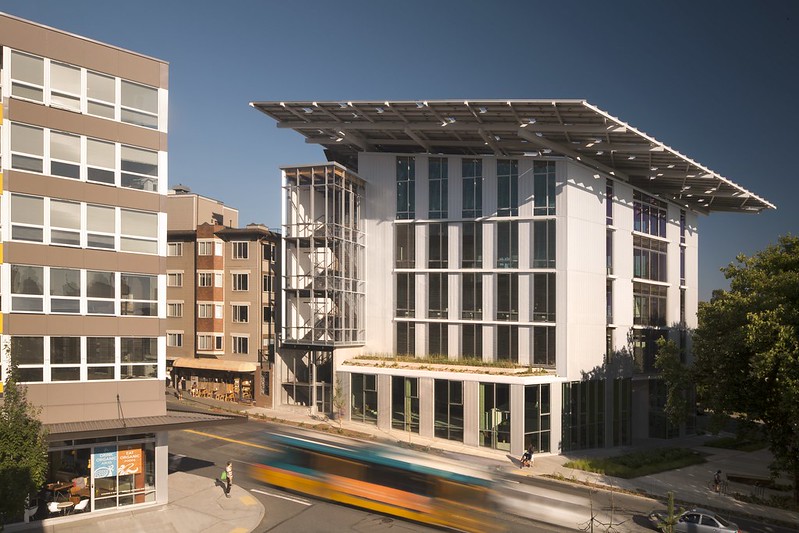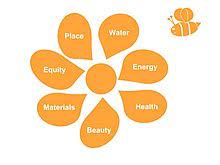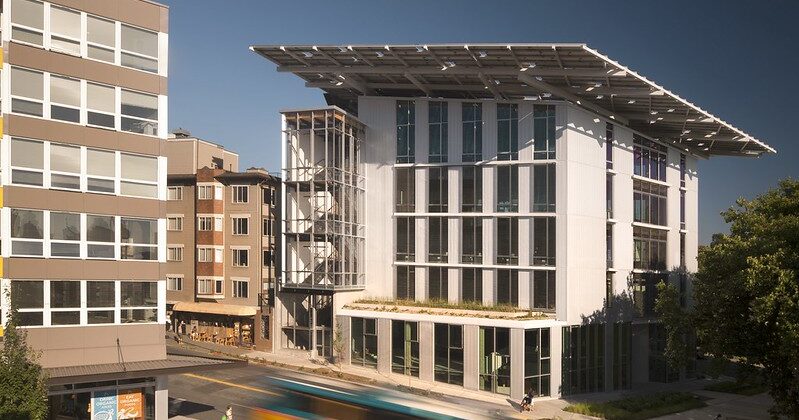Now that’s the kind of ambition needed for the transformation to After Capitalism. The building is the Bullitt Center in downtown Seattle. I was in Seattle and took the opportunity to book a tour. One of my goals after the book comes out is to visit people, places, and organizations that are already on the road to After Capitalism.

The bold vision to be the greenest is laid out by CEO Denis Hayes, who you may remember as a key driving force behind Earth Day. There are many remarkable features of the building. But perhaps the most amazing of all was that they used existing commercial technologies. It is not some futuristic pilot relying on hugely expensively emerging technologies, but rather brings together approaches that are already here today. They wanted to show what can be done right here, right now at the local level by combining design, behavior change, and prudent infrastructure investments.
You may be aware of the LEEDS Certification for buildings. But what about the Living Building Challenge? [I confess that it was news to me as well]. It’s a next level of good practice. It requires a project to meet 20 specific imperatives within seven performance areas (or “Petals”). For the Bullitt Center, meeting the imperatives included the following:

- Site: The location supports a pedestrian-, bicycle-, and transit-friendly lifestyle.
- Water: Rainwater is collected on the roof, stored in an underground cistern and used throughout the building (once approved by the regulatory authorities).
- Energy: A solar array generates as much electricity as the building uses (actually 60% more than we used in 2014).
- Health: The building promotes health for its occupants, with inviting stairways, operable windows and features to promote walking and resource sharing.
- Materials: The building does not contain “Red List” hazardous materials, including PVC, cadmium, lead, mercury and hormone-mimicking substances, all of which are commonly found in building components.
- Equity: All workstations are within 30 feet of large operable windows, offering workers access to fresh air and natural daylight.
- Beauty: Stunning architecture, an innovative photovoltaic array, a green roof and other native plantings, large structural timbers and a revitalized pocket park help beautify the surrounding neighborhood.
The tour shows you each of these and many other features. It was pretty funny to hear our guide lament the switch from compost toilets to vacuum toilets, because it turned out to be more practical. For them, it’s all about showing that sustainable building is not just some feel-good showcase, but a smart, practical way to build. Kudos to the team at the Bullitt Center and a shout-out to Deborah Sigler of the University of Washington’s Center for Integrated Design for a terrific tour. – Andy Hines

Leave a Reply